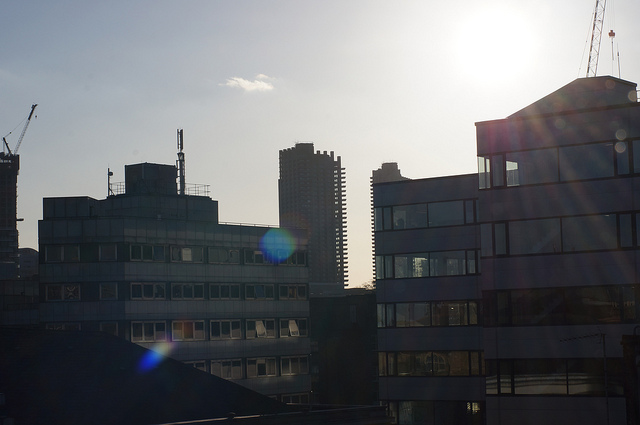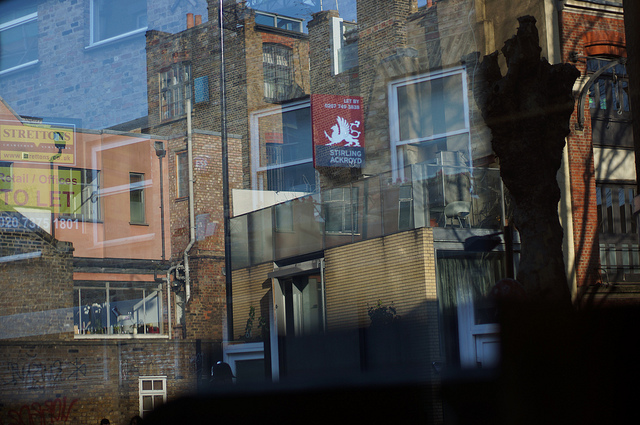London and network friction
Einar Sneve Martinussen | 2. March 2012
I've just spent a week in London. Sitting at borrowed desks in nice studios (thanks!), lecturing at Goldsmiths' Department of Design, and actually seeing the London sun for the first time in 10 years. Brilliant, but my phone doesn't like it. Busses are so big that they disturb its compass' sense of magnetic orientation. 'Move away from any interference' the phone says while I'm stuck inside several tons of double-decker-shaped metal that might very well be heading in the wrong direction. Underground stations and trains without network coverage is another oddity it can't quite phantom, and having it's data-roaming turned off makes it really annoyed (using 3G data abroad is still incomprehensibly expensive). It will passive-aggressively remind me that 'Cellular Data is Turned Off' whenever it get's a chance and obscure any interface with crudely overlaid error-messages.
Underground stations and trains without network coverage is another oddity it can't quite phantom, and having it's data-roaming turned off makes it really annoyed (using 3G data abroad is still incomprehensibly expensive). It will passive-aggressively remind me that 'Cellular Data is Turned Off' whenever it get's a chance and obscure any interface with crudely overlaid error-messages.So how did a London visit accompanied by a needy piece of consumer electronics shape how I experienced the city? First, in a very small way it changed the way I moved about. Most notably through repeatedly choosing to walk down Great Eastern Street instead of Curtain Road to get within reach of my hotel's WiFi. And then pausing for a few minutes on the pavement to download mails and tweets and adjusting the day's plans according to these. Secondly, visiting London brought forward some of the peculiar frictions and seams of this particular networked city. This reminded me of Bell and Dourish paper 'Getting Out of the City' (2004) where they argue for a cultural understanding of networked cities:
Secondly, visiting London brought forward some of the peculiar frictions and seams of this particular networked city. This reminded me of Bell and Dourish paper 'Getting Out of the City' (2004) where they argue for a cultural understanding of networked cities:
'The spaces into which new technologies are deployed are not stable, not uniform, and not given. Technology can destabilise and transform these interactions, but will only ever be one part of the mix’
Importantly then, the mix is always different. The way GPS signals bounce of the architecture or get obstructed by railway-archers. Naming-tropes of domestic WiFi networks and the password-policies and condiments of cafes. Street-culture, pick-pockets, public transport, weather, subscription-models and data-plans are just as crucial for how a networked city is experienced and understood as the overarching infrastructures of the 'smart city'. A few weeks ago I got to be on a panel about imaginary cities with the writer China Miéville at a scifi/fantasy-convention in Oslo. Here Miéville mentioned a wonderful phrase from Algernon Blackwood about 'being bewildered in the way a man is when he’s looking for a post box in a foreign city'. The technical opaqueness of networked cities are akin to the invisibility of quotidian urban life. The cultural grain of everyday life also includes the minuta of the networked city, and can be just as mildly confusing and/or exotic for a visitor.
A few weeks ago I got to be on a panel about imaginary cities with the writer China Miéville at a scifi/fantasy-convention in Oslo. Here Miéville mentioned a wonderful phrase from Algernon Blackwood about 'being bewildered in the way a man is when he’s looking for a post box in a foreign city'. The technical opaqueness of networked cities are akin to the invisibility of quotidian urban life. The cultural grain of everyday life also includes the minuta of the networked city, and can be just as mildly confusing and/or exotic for a visitor.